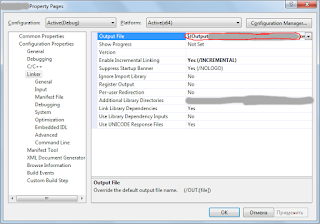How to write c++ programm for android (in Russian)
http://www.codeatcpp.com/2011/10/c-android-1.html
http://sivers.org/blog
How to make a movement
To translate:
Source: http://habrahabr.ru/post/206258/

А ведь правда, если можешь все сделать сам, зачем кого-то убеждать в том, что это надо делать?
http://www.codeatcpp.com/2011/10/c-android-1.html
http://sivers.org/blog
How to make a movement
To translate:
Source: http://habrahabr.ru/post/206258/
2. Базар идей
В какой-то момент в нашей организации вошла в моду фраза «продать идею». Особенно активно я начал натыкаться на эти торги идеями с поднятием по карьерной лестнице, и имея частые совещания с теми, с которыми нас не связывали отношения подчинения. Фраза «продать идею» базируется на маркетинговом термине «sell idea», только понимание оного в проекции на организационную структуру было извращено. Если в оригинальном смысле продающий идею получает выгоду от тех, кто эту идею купил (инвесторы или заказчики), то в организационной структуре, продав идею, максимум можно было получить согласие купившего не мешать тебе ее реализовывать. А так как по такому выгодному курсу купить идею могут позволить себе даже неимущие, в итоге можно было потратить уйму времени, «продавая идею» тем, кто случайно оказался на совещании. Страдая на таких торгах, я часто задавался вопросом «зачем все эти люди?». Так у меня сложилось ощущение, что в одиночку сделать эту работу можно в разы быстрее, чем базаря на ярмарке идей.
А ведь правда, если можешь все сделать сам, зачем кого-то убеждать в том, что это надо делать?





 В данном посте я расскажу о наиболее интересных командах, которые могут быть очень полезны при работе в консоли. Однозначных критериев определения какая команда лучше другой — нет, каждый сам для своих условий выбирает лучшее. Я решил построить список команд на основе наиболее рейтинговых приемов работы с консолью от commandlinefu.com, кладовой консольных команд. Результат выполнения одной из таких команд под Linux приведен на картинке. Если заинтересовало, прошу под кат.
В данном посте я расскажу о наиболее интересных командах, которые могут быть очень полезны при работе в консоли. Однозначных критериев определения какая команда лучше другой — нет, каждый сам для своих условий выбирает лучшее. Я решил построить список команд на основе наиболее рейтинговых приемов работы с консолью от commandlinefu.com, кладовой консольных команд. Результат выполнения одной из таких команд под Linux приведен на картинке. Если заинтересовало, прошу под кат.





